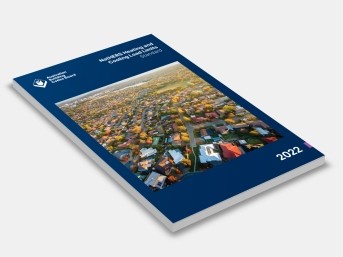NatHERS Heating and Cooling Load Limits Standard
Australian Building Codes Board
The NCC is a uniform set of technical provisions for the design and construction of buildings and other structures throughout Australia.
The NCC energy efficiency provisions require dwellings to be designed and constructed to manage heat transfer through the building envelope to separately minimise heating and cooling loads.
Section 2 of this ABCB Standard contains separate heating and cooling load limits that apply to the design and construction of dwellings using the NCC’s NatHERS compliance pathway for energy efficiency.
Heating and cooling load limits were first introduced in NCC 2019. New load limits have been introduced to reflect the overarching stringency increase in NCC 2022 to the equivalent of NatHERS 7 stars. These load limits have been developed using the 2022 NatHERS climate files and star bands.
This ABCB Standard provides details of the heating and cooling load limits that apply to the NatHERS compliance pathway in the NCC. These load limits are an additional requirement to the existing star ratings for Class 1 buildings, Class 2 sole-occupancy units (SOUs) and Class 4 parts of buildings.
When using the NatHERS compliance pathway for energy efficiency, the NCC requires:
a Class 1 building to achieve a NatHERS 7-star rating, but allows a 6.5 or 6-star rating if a Class 1 building has, respectively, an outdoor living area or an outdoor living area and a ceiling fan in NCC climate zones 1 and 2; and
Class 2 SOUs and Class 4 parts of buildings to achieve a NatHERS 7-star rating on average and a minimum star rating of 6 stars.
Accordingly, heating and cooling load limits have been developed to correspond to each of these target star ratings.
Separate heating and cooling load limits are not required to be achieved in all 69 NatHERS climate zones. This is because some climates are dominated by hot or cold weather, such
as the climate zones in the Northern Territory (NT), Tasmania (Tas) and some climates zones in Queensland (Qld) and Western Australia (WA).
New South Wales (NSW) already has separate heating and cooling load limits (or “caps”) covered in its Building Sustainability Index (BASIX) thermal performance standards.
Hence, heating and cooling load limits do not apply in NSW, NT, Tas and parts of Qld and WA.
Contents:
1: Introduction
2: NatHERS Heating And Cooling Load Limits
3: References
